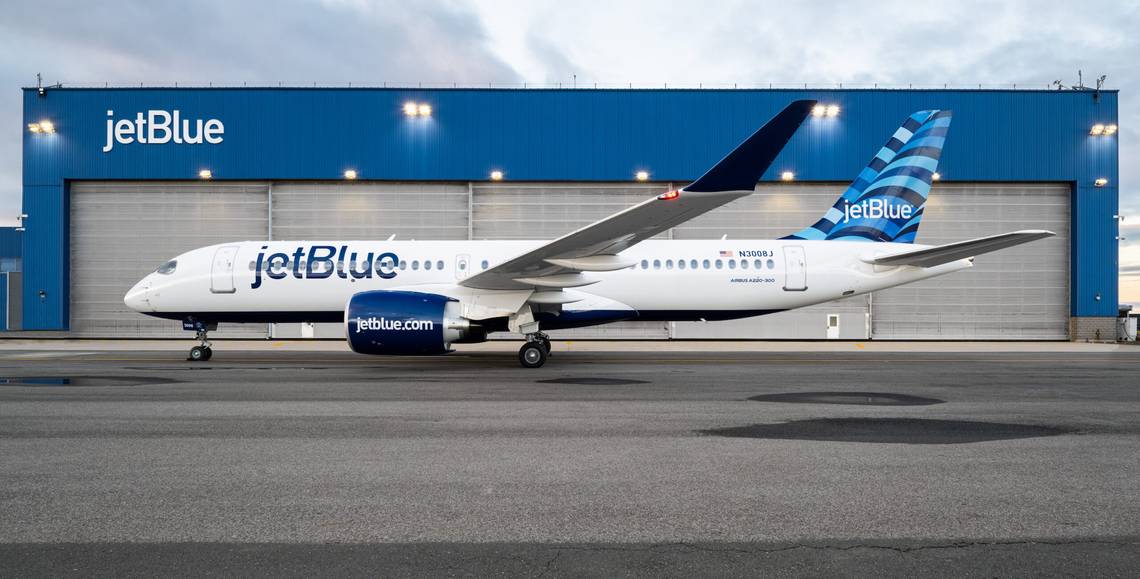Airbus A220-200 Facts and Figures
Iata Code
223
Range
Approx 3400 M / 5471.8 km
Length
38.7 M / 127.0 ft
Wing Span
35.1 M / 115.2 ft
Height
11.5 M / 37.7 ft
Passengers
160
Crew
7
First Flight
29 February 2016

The Airbus 220-200, the younger, slightly larger, more impressive sibling to the A220-100. Still to be considered a small craft, the -200 offers 130-160 seat in its single isle cabin. The extra seats come with a longer fuselage and that is about where the differences stop.
Inside, the -200 has all the same comfortable features as the -100. These include wide, bucket style seats that give a sense of increased personal space and legroom , some of the largest windows you’ll find on an aircraft, and ample overhead storage (no more stuffing bags under the seat in front). It also features the same lighting, inhouse entertainment and ‘flex zones’ as the -100 containing adjustable modular cabin components. These features along with the reduced noise pollution thanks to the Turbofan engines, result in a new level of standard class comfort.
How does the -200 measure up? The A220-200 has a nose to tail length of 38.7 meters and a height of 11.5 meters. Wingspan reaches 35.1meters with cabin width comfortably at 3.7 meters. That is just an extra 3meters in length than the -100 model with height and wingspan remaining the same.
What does this extra 3m in length do? The obvious side effects are an increase in passenger which alongside the extra mass, add a considerable amount of weight. However, the efficiency of the construction and materials combined with those Pratt & Whitney PurePower PW1500G geared turbofan engines ensure that these craft don’t compromise on range. This has opened some interesting new routes for the A220 series, inspiring airBaltic to operate it on journeys to Abu Dhabi, Malaga, and Lisbon. AirBaltic are champions of this craft and plan to have a fleet of 100 of the -200 craft within the next 10 years.
The increased passenger capacity has allowed this model to become competitive on mid haul or transcontinental flights while the -100 is typically reserved for regional journeys.